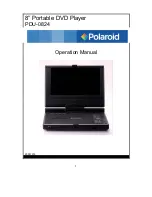
13
inspect Muffler and spark arrester
Figure
10
Inspect the muffler for cracks, corrosion, or other damage. Remove the spark arrester,
if equipped, and inspect for damage or carbon blockage. If replacement parts are
required, make sure to use only original equipment replacement parts.
clean and inspect the spark arrester as follows:
1. To remove muffler guard (
a
), remove screws that connects guard to muffler (
B
).
2. Remove screws that attaches spark arrester screen (
c
) to muffler. Remove
spark arrester screen.
3. Inspect screen and obtain a replacement if torn, perforated or otherwise
damaged. DO NOT use a defective screen. If screen is not damaged, clean it
with a brush.
4. Reattach screen to muffler. Reattach muffler guard.
clean cooling system
Figure
11
Over time debris may accumulate in cylinder cooling fins and cannot be observed
without partial engine disassembly. For this reason, we recommend you have a Briggs
& Stratton authorized dealer clean the cooling system (
a
) per recommended intervals
(see
Maintenance Schedule
in the
Maintenance
section). Equally important is to keep
top of engine free from debris. Also see
Cleaning
.
carburetor adjustment
The carburetor on this engine is low emission. It is equipped with a non-adjustable idle
mixture valve. Top speed has been set at the factory. If adjustment is required, see a
Briggs & Stratton authorized dealer.
storage
If you will not be using the generator for more than 30 days, use the following
guidelines to prepare it for storage.
generator storage
• Clean the generator as outlined in
Cleaning
.
• Check that cooling air slots and openings on generator are open and unobstructed.
Long term storage instructions
Fuel can become stale when stored over 30 days. Stale fuel causes acid and gum
deposits to form in the fuel system or on essential carburetor parts. To keep fuel fresh,
use Briggs & Stratton FRESH START® fuel stabilizer, available as a liquid additive or a
drip concentrate cartridge.
There is no need to drain petrol from the engine if a fuel stabilizer is added according
to instructions. Run the engine for 2 minutes to circulate the stabilizer throughout the
fuel system. The engine and fuel can then be stored up to 24 months.
If petrol in the engine has not been treated with a fuel stabilizer, it must be drained into
an approved container. Run the engine until it stops from lack of fuel. The use of a fuel
stabilizer in the storage container is recommended to maintain freshness.
change engine oil
While engine is still warm, drain oil from crankcase. Refill with recommended grade.
See
Changing Engine Oil
.
other storage tips
1.
DO NOT store fuel from one season to another unless it has been treated as
described in
Long Term Storage Instructions
.
2. Replace fuel container if it starts to rust. Rust and/or dirt in fuel can cause
problems if it’s used with this unit.
3. Cover unit with a suitable protective cover that does not retain moisture.
4. Store generator in clean, dry area.
warning
Contact with muffler area can result in serious burns.
Exhaust heat/gases can ignite combustibles, structures or
damage fuel tank causing a fire.
• DO NOT touch hot parts and AVOID hot exhaust gases.
• Allow equipment to cool before touching.
• Keep at least 1.5 m (5 feet) of clearance on all sides of generator including
overhead.
• Contact the original equipment manufacturer, retailer, or dealer to obtain a spark
arrester designed for the exhaust system installed on this engine.
• Replacement parts must be the same and installed in the same position as the
original parts.
warning
Fuel and its vapors are extremely flammable and explosive which
could cause burns, fire or explosion resulting in death, serious
injury and/or property damage.
wHen storing FueL or eQuiPMent witH FueL in tank
• Store away from furnaces, stoves, water heaters, clothes dryers or other
appliances that have pilot light or other ignition source because they could ignite
fuel vapors.
wHen draining FueL
• Turn generator engine OFF and let it cool at least 2 minutes before removing fuel
cap. Loosen cap slowly to relieve pressure in tank.
• Drain fuel tank outdoors.
• Keep fuel away from sparks, open flames, pilot lights, heat, and other ignition
sources.
• Check fuel lines, tank, cap and fittings frequently for cracks or leaks. Replace if
necessary.
• DO NOT light a cigarette or smoke.
warning
Storage covers could cause a fire resulting in death, serious
injury and/or property damage.
• DO NOT place a storage cover over a hot generator.
• Let equipment cool for a sufficient time before placing the cover on the equipment.
caution
Excessively high operating speeds could result in minor injury
and/or generator damage.
Excessively low speeds impose a heavy load.
• DO NOT tamper with governor spring, links or other parts to increase engine speed.
• DO NOT modify generator in any way.
Not
for
Reproduction














































